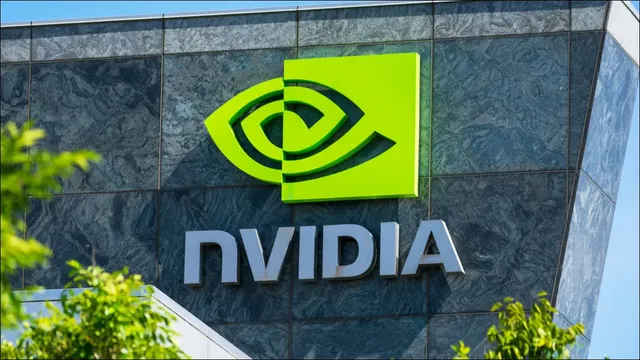Beyond the GPU: NVIDIA’s venture investments as forecast for the AI economy
Led by its venture arm, NVentures, the company has participated in over 50 AI deals this year. This is about more than just looking for a return. It’s about building an ecosystem.

Led by its venture arm, NVentures, the company has participated in over 50 AI deals this year. This is about more than just looking for a return. It’s about building an ecosystem.
This year, NVIDIA has been up to more than just manufacturing and shipping GPUs. The $4.4 trillion tech giant is quietly shaping the future of AI. Led by its venture arm, NVentures, the company has participated in over 50 AI deals this year.
This is about more than just looking for a return. It’s about building an ecosystem.
NVIDIA has the leverage to not just bet on the future but to shape it. Strategists and builders who want to be a part of that future need to pay less attention to today’s headlines and more to the pattern of capital deployment driving tomorrow’s.
In this article, I decode five signals from NVIDIA’s portfolio and translate them into a strategist’s playbook. If you want to anticipate the industry, these are the high-leverage moves you need to be wiring into products, partnerships, and roadmaps right now.
Signal 1: There’s value throughout the stack
NVIDIA’s ambitions are expanding beyond silicon. Its investments sprawl across several layers: orchestration, inference engines, dev tools, model lifecycles, and deployment pipelines. The GPU is essential, but it is no longer the sole driver.
When the cost of compute becomes more fungible, economic value will accrue to the layers around the chip—plumbing, abstraction, and orchestration. NVIDIA is positioning itself to capture not only compute revenue but also the revenues flowing through the stack.
- Strategic move: Treat your product as a “hook” into the stack. Build modules, APIs, or services that sit between model and application. Think connectors, optimisers, model switchboards, inference accelerators — whatever keeps everything else running.
- Who this matters for: Cloud providers, chipmakers, and dev-tool builders can strengthen their position by developing integrations and performance-boosting middleware. Systems integrators can win by building orchestration tools that connect compute resources to the growing AI application layer.
Signal 2: Foundational models as platforms, not products
NVIDIA is investing serious capital into foundational AI labs: OpenAI, Mistral AI, Cohere, Imbue, and Reka. These are not narrow vertical plays; they aim to own or influence the logic layer for many downstream use cases.
In other words, NVIDIA is signalling that the foundational model itself is a platform commodity — an underlying substrate over which differentiated, domain-aware systems will be built. The future will not belong to whoever builds “the next model”. It will belong to those who create products that wrap value around those models.
- Strategic move: Don’t try to replicate the models. Instead, add context, domain knowledge, data specialisation, etc., around them. Build applications that plug into foundational moulds and add defensibility through vertical depth.
- Who this matters for: Enterprises with deep proprietary data — from banks to hospitals to logistics firms — can build on top of these models to deliver high-trust, domain-specific AI. SaaS companies and consultancies can capture value by offering fine-tuning, compliance, and integration services around existing platforms.
Signal 3: Infrastructure is the choke point to scale
NVIDIA is also betting on infrastructure. Its investments in Lambda, CoreWeave, Nscale, Ayar Labs, and Firmus Technologies suggest that dealing with compute friction will be more consequential than raw model breakthroughs.
Very soon, the greatest challenge developers face won’t be whether they can train a better LLM. It’ll be whether they can deploy it at scale under local energy constraints.
- Strategic move: Position for “friction relief”. Invent systems that reduce latency, conserve energy, manage thermals, and optimise data routing. Those who deploy at scale (clouds, labs, applied AI) will feel the upside first as efficiency becomes the new competitive edge.
- Who this matters for: Cloud providers, chipmakers, and data-centre operators can get ahead by making infrastructure faster and more efficient. Edge computing firms, AI companies, and energy-tech players can also benefit by finding new ways to reduce latency, power consumption, and costs as AI demand grows.
Signal 4: Verticals will be where profit lives (for a while)
NVIDIA’s portfolio is anchoring its capital in diverse verticals: robotics (Wayve, Figure AI), generative media models (Runway), and healthcare (Hippocratic AI).
Why? Because until general AI fully materialises, real revenue will flow through domain-specialised systems. Horizontality has limits (regulation, domain complexity, trust, etc.). NVIDIA understands that verticals will breed differentiation.
- Strategic move: Choose a domain where data, regulation, and process complexity create switching costs. Use the infrastructure and model investments above to build defensible vertical stacks. Winning vertical depth will outperform generic breadth.
- Who this matters for: Operators in sectors like healthcare, finance, and manufacturing can use AI to automate workflows and gain data advantages. Investors should back founders who bring deep domain knowledge and regulatory fluency to these verticals.
Signal 5: Structuring for shared success & lock-in
One of the strongest signals lies in how NVIDIA is structuring these investments. Many deals don’t just provide capital — they bind revenue, purchasing commitments, and ecosystem dependencies. Contracts with model labs include GPU commitments; investments in infrastructure embed NVIDIA’s silicon deeper into operating flows.
For example, consider NVIDIA’s $100 million deal with OpenAI. This is not just an investment; it’s a strategic partnership. The agreement creates a mechanism to ensure that OpenAI’s compute footprint remains tied to NVIDIA gear, giving the latter influence over runtime environments, standards, and deployment choices for years to come.
This is ecosystem engineering: when your growth helps your startup partners, and their growth accelerates yours, you create a virtually unstoppable flywheel.
- Strategic move: Design your own partnerships this way. Rather than just licensing or selling, think equity + usage commitments, co-innovation structures, and shared incentives. Architect your business so that you and your partners can scale together.
- Who this matters for: Corporate venture teams, platform leaders, and founders can use similar partnership structures to lock in mutual growth. Cloud and enterprise providers, in particular, can secure long-term relevance by aligning incentives with customers and ecosystem partners.
Takeaway: Read the investment trail, not just the deals
NVIDIA’s venture moves are more than just a series of bets on where they think they can make money. They are directional signposts to where AI’s axes of value are shifting. For strategists, the key isn’t to chase down each deal but to reverse-engineer the space that NVIDIA is trying to create and make strategic moves to occupy your own fair share of it.
Now’s the time to move from fascination to formation. NVIDIA is doing more than just forecasting where value, friction, and opportunity are converging; they’re putting their money where their models are. The next decade of AI will be shaped by those who learn to orchestrate their efforts within the new ecosystem that NVIDIA is creating.



